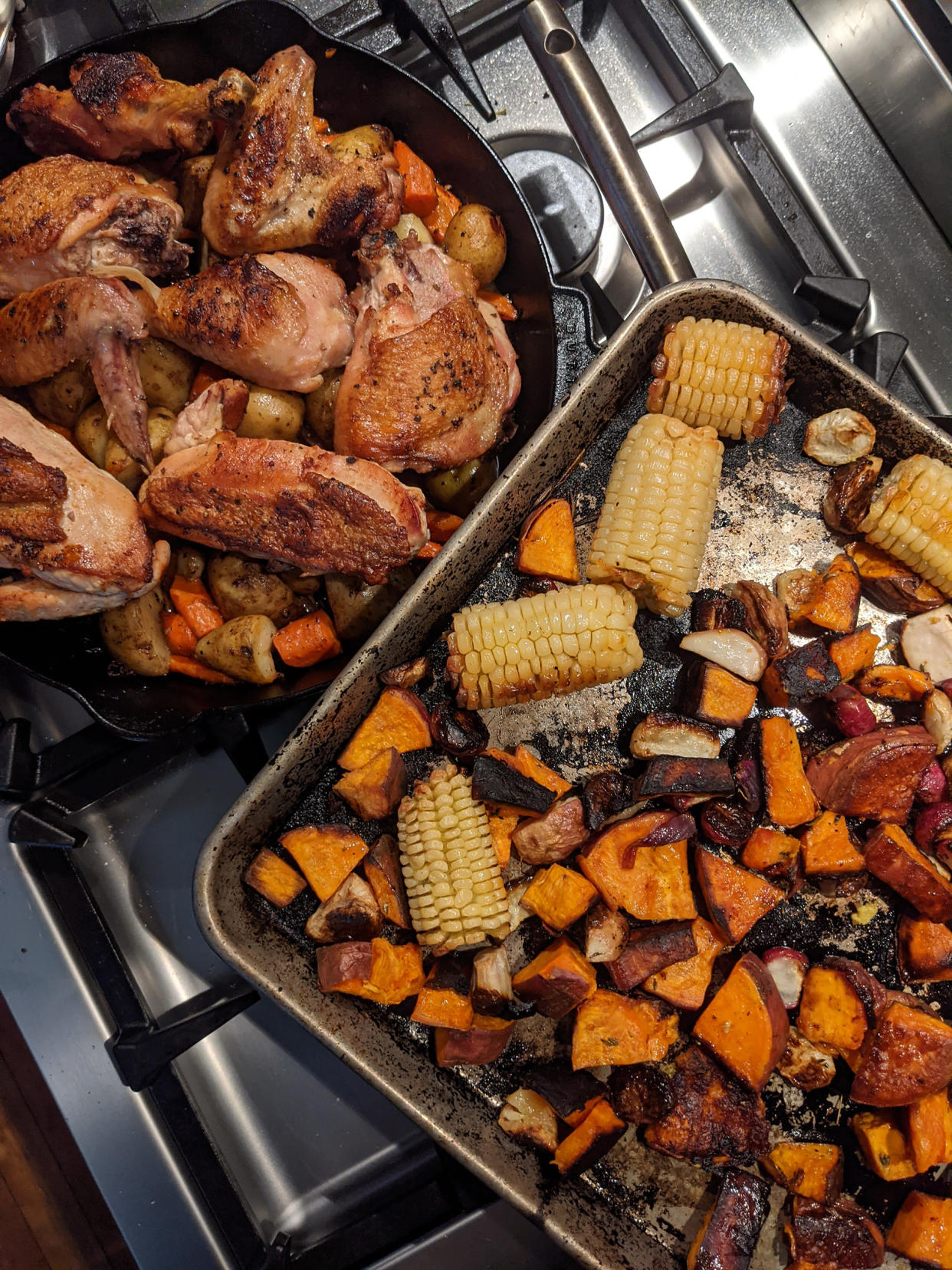Why you should really be burning your vegetables, according to a chef
Want to eat more vegetables? Like, stand at the stove and grab from the pan as fast as you can level eat more vegetables? I have two words for you: burn them.
True story! This is one case where you shouldn’t be afraid to burn something in the kitchen. Burning everything from carrots to eggplant takes veggies from good for you to so good you can’t stop eating them.
Chargrilled 'Burnt' Carrots by Tim Love
I first found this when my husband and I followed a recipe for burnt carrots; it sounded intriguing, so we tossed them in olive oil and cooked them far longer than we ever had before, and learned the extra time resulted in, basically, candy. Better still, it turned out a whole rainbow of other vegetables benefited from this treatment and soon I was burning cauliflower and broccoli, sweet potatoes and kale.
And I’m not alone: a thread on the topic on Facebook turned up a slew of friends who also love to burn their vegetables. What is this magic? Kentucky chef Samantha Fore of Tuk Tuk Sri Lankan Bites shared some insights with TODAY Food.
Char your veggies
In a reversal of the age-old task of parents getting their kids to eat vegetables, Fore saw her parents-in-law convert from avowed Brussels sprouts haters to “obsessed” with the veggie after husband made them a roasted, “charred up” sprouts dish. This came as no surprise to her.
Think about the inherent sweetness of a starchier vegetable like a carrot, Fore said. The longer cook time amplifies sweet factor, she said — hence the candy flavors. For a couple of Kentuckians, we understand this in the same way we understand that charring oak barrels before bourbon ages in them lends a caramel sweetness. It’s the same idea as with toast, she said. And, happily, with a lot of vegetables.

Fore’s favorite is cabbage, charred with olive oil, salt, and pepper, but she also loves wedges of turnips, radishes and corn cooked on the grill till they develop a beautiful golden brown char and are cooked all the way through. But the burn trick isn’t limited to vegetables; all manner of fruits are delicious, too, she said. (Try peaches with ice cream, she said!)
So where is the sweet spot, so to speak, of charring your vegetables (or fruits)? An easy way to know when something is done on the grill, she said, is when it stops sticking to the grate. Many of us have a tendency to want to move our food around as it’s cooking, she said, but resist that urge. Leave it alone so it can form the crust that seals in the goodness. (The contrasting texture is also part of the magic of burnt veggies!) “That's the fun thing about charring is that it tells you when it's done.”
Charred Brussels Sprouts by Chris Kimball
If you’re cooking in the oven, she said, stick a cake tester in a piece to check for tenderness once you see the char form. On the stovetop in a pan? “I use my ears,” she said, “and listen for that sizzle to stop. Once it’s formed that crust, that’s the money making point.” She uses tongs to squeeze the veggie to make sure it’s tender. Because there is a line to walk in blasting it with enough heat to get that caramelized exterior while making sure the inside has enough time to cook through. Raw insides aren’t going to convert anyone to Brussels sprouts lovers.
Cook it longer, not hotter
It takes some time and practice to find that line, and there’s not a one-size-fits-all approach, Fore said. But as a general rule, she likes to cook longer, not hotter. A good starting point in the oven is about 375, she said, ideally with the convection on. That basically turns your oven into a giant air fryer, she said, and makes the browning a little more even. On the stovetop it’s going to be medium-high. Once you get comfortable with the technique, she said, you can try higher heat. Experiment with your fats, too. While olive oil is lovely, duck fat is my secret weapon.
Want to level it up even further with sauces and dips? Start playing! A favorite for Fore is to serve charred radishes with miso; just mix a teaspoon of miso paste with about a stick up butter and apply lavishly. I recently made a green goddess butter to slather on a pan of burnt vegetables. And nobody says they have to be relegated to a side dish. I recently charred everything in my crisper and dropped the whole pan’s worth into a hondashi coconut broth with fresh udon noodles for luscious vegetable-forward soup. A heap of burnt veggies can transform a run of the mill salad into the star of dinner. They can top a pizza or pasta, round out a curry, or bulk up a frittata.
But honestly, the beauty in a perfectly burnt vegetable is that it’s delicious on its own. I dare you to not stand at the stove popping them in your mouth the next time you burn your carrots.






